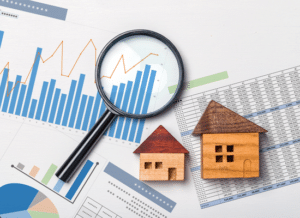Cost overruns have continuously presented a burden on earning profit for construction companies. They lead to delays, heavy financial strain and sometimes even project failures. Cost overruns coupled with pressing economic challenges the construction industry’s shrinking profit margins are making it harder to stay in business. There may still be something businesses can do to save themselves from this trouble. Cost reporting and audits are two fantastic methods of effectively managing overruns and preventing future financial threats.

The role of cost reporting
Effective cost reporting tells the story of a construction project, breaking down the movement of every penny through the process. By using this meticulous assurance measure, a company can identify key points of financial trouble while it occurs including unexpected expenses, overspending and inefficient fund allocation. Like a doctor, a cost report gets to the root of the problem and identifies possible solutions. Not only does it help companies stay within budget but when shared with stakeholders it creates open and transparent communication which in turn builds confidence and fosters positive relationships. Overall, cost reporting goes above and beyond in helping construction companies fight one of the biggest threats to their financial goals.
What does cost reporting entail?
Construction cost reporting paints a detailed picture of a project’s financial health. To know the full story, the report includes three types of information:
Project Details: The first thing a cost report includes are the details of the project. A narrator, they lay the scene and provide context to the cost information included later. The name, location, overview and start/completion dates of the project are listed.
Financial Overview & Cost Breakdown: Next the report provides a broad overview of the project’s finances before narrowing in on the specific cost details. By illustrating the project’s financial landscape, readers can analyze costs for problems in relation to the overall goal and progress. The financial overview includes the projects budget (goal), current spending (progress) and estimated completion cost (adjusted path). Current spending is broken down into a list of every expense. Every expense is accounted for and includes an explanation for its inclusion in the project. The list forces costs to be analyzed based on their necessity and reveals unnecessary expenditures that may need to be stopped. Listing costs requires a lot of time and patience due to the meticulous nature of combing expenses and articulating reasonable explanations.
Progression Analysis
Finally, the report takes a step back to look at the overall progress of the project. It allows stakeholders to see costs in the bigger picture. In this section the original budget is compared to the project’s actual expenditures. Here we can determine if the project has stayed on path, is lagging or charging ahead. In addition to financial progress, the physical is documented, including any milestones reached.
What costs are included?
When it comes to what to include in your cost report, it is safe to say that you should include everything. The thoroughness of a cost report determines its usefulness. The end report will need to include:
Direct costs: Any expenditure that are directly used in the production of a specific good or service. Primary includes materials, labor, machines, contractors and subcontractors.
Indirect costs: All costs required to run your business and that allow a company to perform a job that do not contribute directly to producing that good or service. Administrative costs, overhead expenses, depreciation, training & development, insurance and licensing are all included in this category.
Anticipated costs: Expenses not yet incurred but will in the future of the project.
Fixed costs: These costs are not impacted by quantity and are usually included in indirect costs. It can include rent or lease costs, insurance and salaries.
Time related costs: Costs incurred for only a specific period but not for the entirety of the project. For example, if the contractor needs to acquire a temporary office space, that rent is included.
Quantity – proportional costs: As the name suggests, these costs change based on the quantity utilized. Quantity proportional costs may be classified as either direct or indirect costs. Hourly salaries, material costs, administrative material costs, utility bills (electricity, water and gas) are just some examples of this cost.
What should I do?
In the end, cost reporting is so much more than just numbers on a page. A well-constructed report acts as a map, providing clear guidance through the vast financial terrain of the project. Its careful level of detail and all-encompassing nature make it invaluable for any construction company. Cost reporting is a fantastic method for discovering financial instabilities and possible threats to the financial outcome of the project. If you want to ensure that a project goes to plan, hire a qualified cpa to start cost reporting for your company.
For more information, please contact Tom Burton via our online contact form.
Councilor, Buchanan & Mitchell (CBM) is a professional services firm delivering tax, accounting and business advisory expertise throughout the Mid-Atlantic region from offices in Bethesda, MD and Washington, DC.



